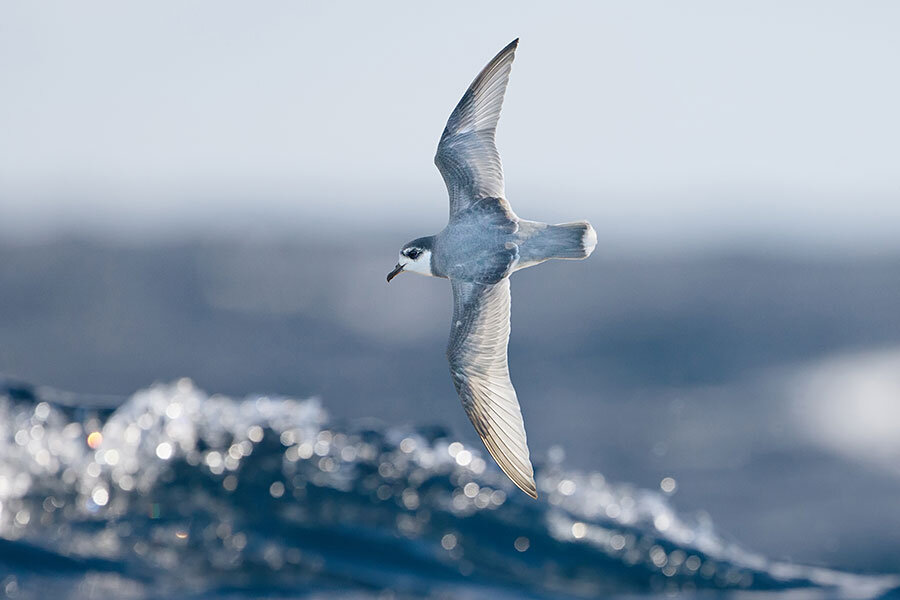What makes plastic trash seem so tasty to seabirds?
As more and more human trash ends up in the world's oceans, animals like seabirds increasingly encounter the stuff. And as a result, they end up snacking on plastic.
But why? researchers have wondered. Surely plastic doesn't seem very tasty, at least not to humans.
But to seabirds, plastic might actually seem just like food, according to a study published Wednesday in the journal Science Advances. Much like the smell of a perfectly roasted turkey wafting through the house might invite hungry humans into a kitchen, scientists found that plastic floating in the ocean gives off odors that are particularly enticing to seabirds.
Over 10 million tons of plastic ends up in the ocean each year, and 90 percent of seabird species eat it. Understanding why the animals are mistaking plastic for food could help humans figure out a way to mitigate the problem, perhaps by making the trash seem less appetizing, suggests study lead author Matthew Savoca, a PhD candidate in ecology at the University of California, Davis.
"When you think about an animal doing something that's 'stupid,' it might actually make a lot of sense when you consider that organism's perspective," Mr. Savoca says in an interview with The Christian Science Monitor. "They have evolved over tens of millions of years to use this cue to find food and so they're not making a stupid decision, they're making an incredibly intelligent and very precise decision."
Savoca says when he first thought the birds might be picking up on a food-like odor coming from the plastic, he thought "that's an idea so crazy it might be worth looking into."
When he did, Savoca found that a group of seabirds that have particularly keen senses of smell, such as albatrosses, shearwaters, and petrels, use their sniffers to locate a particular odor compound, dimethyl sulfide (DMS), produced by algae when animals like krill munch on it. As the birds like to eat the organisms that eat the algae, a whiff of DMS signals to the seabirds that a snack is nearby.
"It actually smells like decaying seaweed," or rotting cabbage, Savoca says of DMS.
And, it turns out, when the algae coats plastic adrift in the ocean, it also reeks of DMS.
This wasn't all that surprising, Savoca says, because those same species of birds that seem to rely heavily on the smell of DMS to find food also seem to be eating plastic a lot more frequently than those that don't seek out the stinky compound.
"If this is true," Erik van Sebille, a physicist who studies plastics in the ocean at Imperial College London and who wasn't part of this research, says in an interview with the Monitor, "it is hugely important and it can go a long way to explaining why we see so much plastic in seabirds."
Some seabirds have been found to have hundreds of pieces of plastic in their stomachs, Dr. van Sebille says, so scientists suspected their trash-munching habits must be more than simple curiosity.
It had been suggested that perhaps the plastic simply looked like food to marine animals (as it's not just birds nibbling on the trash). For example, Savoca says, some scientists said perhaps sea turtles were eating plastic bags because they looked like jellyfish in the water.
It probably takes more than just one sense for animals to mistake trash for food, Savoca says. For example, he says, "You wouldn't eat a piece of pizza if it didn't smell or feel or taste like pizza. You need to have multiple cues on different sensory modalities to confirm, yes, this is pizza. But if something both looked and smelled like pizza, it would be harder for you to say no to it than if it just looked like pizza."
It's difficult for scientists to determine whether consuming plastic is actually killing seabirds and other marine animals directly, van Sebille says. But it's certainly having a detrimental effect.
"In the case of seabirds, most biologists would agree that just the fact that they're carrying deadweight around is bad for the birds," he says.
Birds derive no energy from consuming plastic, unlike, say, actual food, so the animals are expending both time and energy attempting to consume and digest it, and filling their bellies with wasted content. And for animals that have bodies built to be as light as possible, that extra weight is probably causing all kinds of challenges.
Understanding the role of DMS in seabirds' foraging might help scientists come up with a way to mitigate this plastic-eating problem, Savoca says. And it might go beyond seabirds, as research suggests some fish, turtles, and even harbor seals also use the odor to locate food.
"Maybe there is something that can be done to alter the surface of consumer plastics to make it less easy for those plastics to get fouled at sea by the algae," Savoca says. But, he adds, as an ecologist that sort of material science challenge is not his area of expertise.
Van Sebille says such a remedy would be focusing on the effect, not the root of the problem. "I think that really the solution should be not to put the plastic in [the ocean] in the first place," he says.







